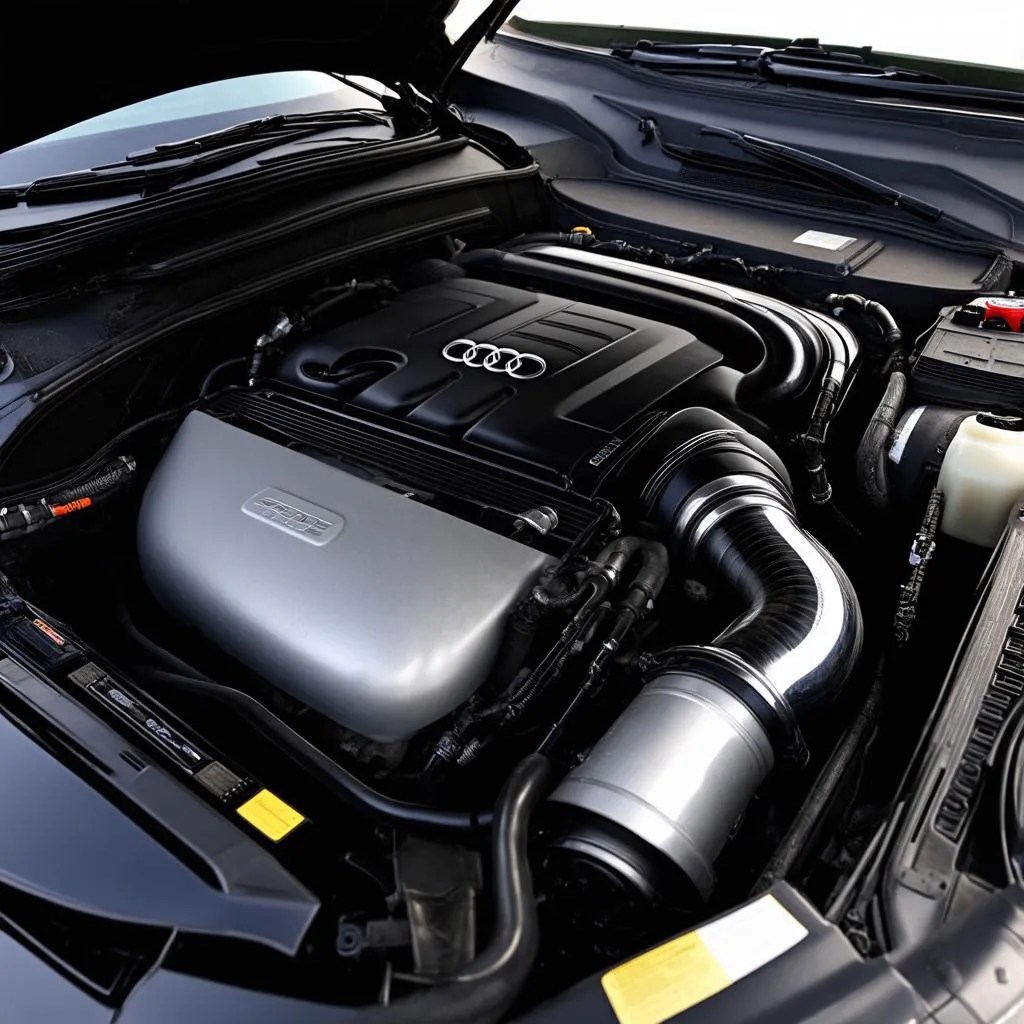Unlocking the Power of Your 1.8T: A Guide to Ross-Tech VCDS and Boost Pressure
Imagine this: you’re cruising down the highway, the wind in your hair, your favorite song blasting on the radio. Suddenly, you hit the gas to overtake a slow-moving truck, but instead of the satisfying surge of power you expect, your Audi A4 1.8T feels sluggish and unresponsive. Could it be a boost pressure issue? And if so, how can you diagnose and fix it?
Enter Ross-Tech VCDS, the ultimate tool for Audi enthusiasts and mechanics alike. Like a seasoned mechanic wielding a trusty wrench, VCDS allows you to delve deep into your car’s electronic brain, unraveling the mysteries of boost pressure and more.
Understanding the Importance of Boost Pressure in Your Audi A4 1.8T
Before we dive into the specifics of VCDS, let’s first understand what boost pressure is and why it’s crucial for your 1.8T engine’s performance. In simple terms, boost pressure refers to the amount of air forced into the engine’s cylinders by the turbocharger. This extra air allows the engine to burn more fuel, resulting in a significant increase in power output.
Think of it like this: if your engine is a weightlifter, boost pressure is its pre-workout protein shake. Just like the protein shake gives the weightlifter the energy to lift heavier weights, boost pressure gives your engine the extra oomph to accelerate faster and climb hills with ease.
Ross-Tech VCDS: Your Gateway to Diagnosing Boost Pressure Issues
Now, how does Ross-Tech VCDS fit into all of this? Well, imagine VCDS as a high-tech stethoscope for your car. It allows you to communicate with your Audi’s ECU (Electronic Control Unit), the brain that controls everything from engine timing to boost pressure.
By connecting VCDS to your car’s OBD-II port, you can:
- Read and clear fault codes: VCDS acts like a detective, pinpointing any error codes related to boost pressure, such as “Boost Pressure Regulation: Limit Exceeded” or “Charge Pressure Control: Negative Deviation.”
- Monitor live data: Like a vigilant guardian, VCDS lets you monitor live data streams from various sensors, including the boost pressure sensor. This allows you to see exactly how much boost your engine is producing in real-time and identify any deviations from the expected values.
- Perform output tests: This feature allows you to test individual components, such as the N75 valve (which controls boost pressure) to ensure they are functioning correctly.
Expert Insight: “VCDS is an invaluable tool for anyone serious about working on their own Audi,” says John Miller, a veteran Audi mechanic with over 20 years of experience. “It’s amazing how much information you can access with this software. I’ve diagnosed countless boost pressure issues with VCDS that would have been nearly impossible to find otherwise.”
Common Audi A4 1.8T Boost Pressure Issues and How VCDS Can Help
Here are some common scenarios where VCDS can be your trusty sidekick in diagnosing and fixing boost pressure problems in your Audi A4 1.8T:
Scenario 1: Your car feels sluggish and lacks power, especially at higher RPMs.
VCDS to the rescue: Check the boost pressure sensor readings using VCDS. If the actual boost pressure is significantly lower than the specified values, you might have a boost leak, a faulty N75 valve, or a problem with the wastegate actuator.
Scenario 2: You hear a hissing sound coming from the engine bay, and the engine seems to be down on power.
VCDS to the rescue: This could indicate a boost leak. Use VCDS to monitor boost pressure while inspecting all the hoses and connections in the intake system for any signs of cracks or loose clamps.
Scenario 3: The check engine light is on, and you experience a loss of power.
VCDS to the rescue: Connect VCDS and read the fault codes. If you find codes related to boost pressure regulation, follow the diagnostic procedures outlined in the VCDS software to pinpoint the root cause.
Boosting Your Knowledge: FAQs about Ross-Tech VCDS and Audi A4 1.8T Boost Pressure
Q: Is Ross-Tech VCDS difficult to use?
A: While VCDS offers a comprehensive set of features, it’s surprisingly user-friendly. The software comes with detailed documentation and a helpful online community that can assist you along the way.
Q: Can I damage my car by using VCDS?
A: VCDS is a safe and reliable tool when used correctly. However, it’s crucial to follow the instructions carefully and avoid making any modifications to your car’s settings unless you are confident in your understanding.
Q: Are there any alternatives to Ross-Tech VCDS for diagnosing boost pressure issues?
A: While other generic OBD-II scanners might read basic fault codes, they often lack the depth and functionality of VCDS, especially when it comes to accessing and interpreting Audi-specific data.
Related Questions and Products
- How to check for boost leaks in an Audi A4 1.8T
- Symptoms of a faulty N75 valve
- Best aftermarket boost gauges for Audi A4 1.8T
- Ross-Tech HEX-V2 USB Interface (compatible with Audi A4 1.8T)
Compatible Audi Models:
Ross-Tech VCDS is compatible with a wide range of Audi models, including but not limited to:
- Audi A4 (B5, B6, B7, B8)
- Audi A6 (C5, C6, C7)
- Audi TT (8N, 8J)
 Audi A4 1.8T Engine
Audi A4 1.8T Engine
 Ross-Tech VCDS Interface
Ross-Tech VCDS Interface
Need Further Assistance? We’re Here to Help!
Diagnosing and fixing boost pressure issues in your Audi A4 1.8T can be a rewarding experience. But if you ever find yourself feeling lost or unsure, don’t hesitate to reach out to our team of expert mechanics via Whatsapp at +84767531508. We offer 24/7 support and can help you get your Audi back to peak performance.
We’d love to hear about your experiences! Share your thoughts, questions, and success stories in the comments section below. And don’t forget to explore our website, cardiagxpert.com, for a wealth of information on all things automotive diagnostics. Happy wrenching!
